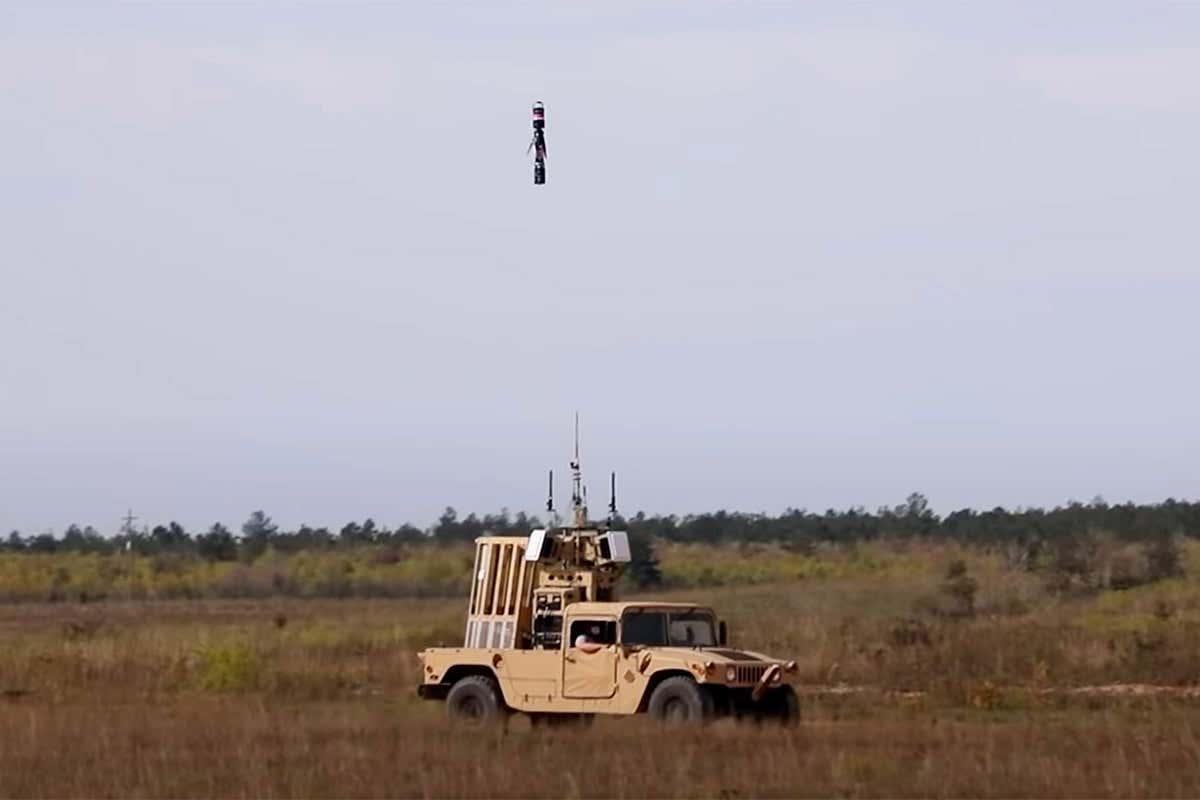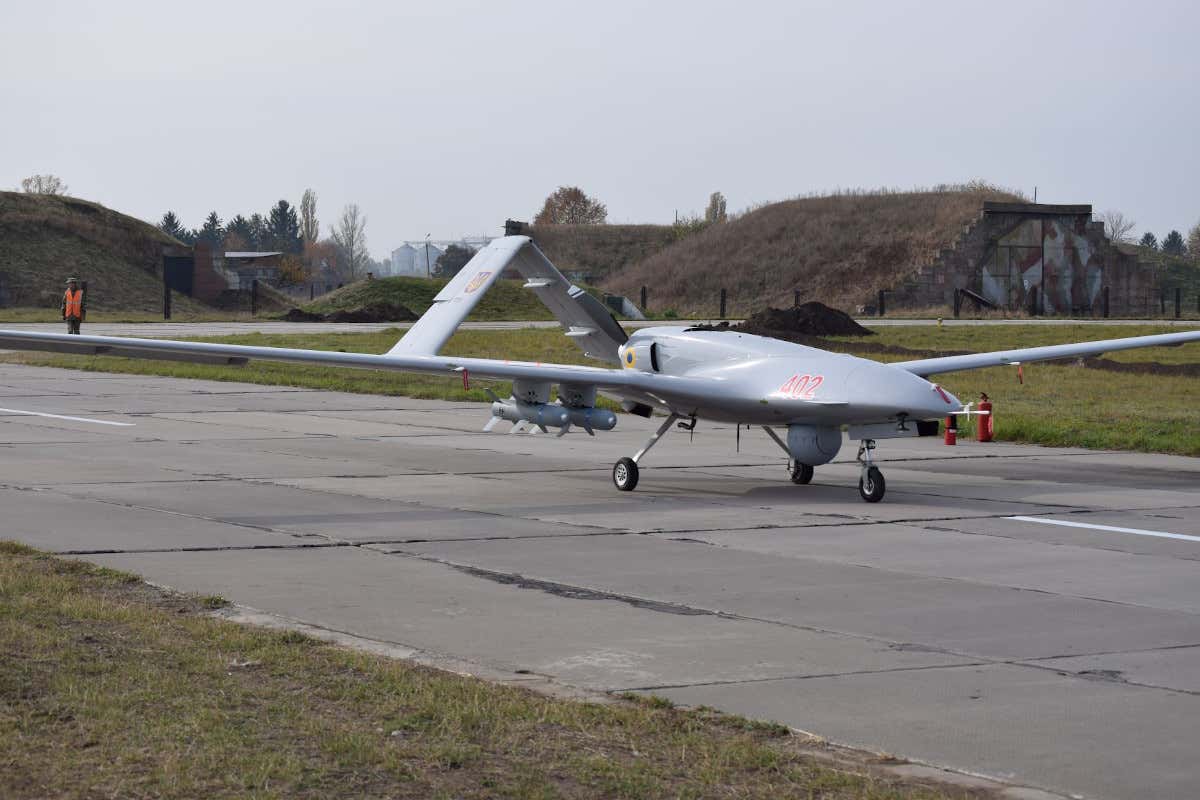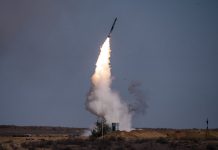The Russian war in Ukraine has led to the demonstration of power that Unmanned Aerial Vehicles (UAVs) hold in modern warfare, with Ukrainian troops wreaking havoc on a much-superior Russian military with its armed drones.
Big Success For China’s BRI Project; Claims Its Indigenous Deep-Trenching Tech ‘Broke Records’ In Bangladesh
The proliferation of aerial vehicles and their use in combat has led to experts believing there is a need for countermeasures to stop and hunt down drones potentially deployed to carry out fatal attacks.
To that end, experts in the UK claim to be working on a drone interceptor that can not only identify but also track down adversary drones at breakneck speed.
Metro News reported that British defense experts are working on a drone interceptor to knock targets out of the sky during football matches. The sophisticated countermeasure can fly up to 80 meters per second as it zeroes in on an Unmanned Aerial System (UAS) and hurtles into it. It was first unveiled in March of this year.
The Interceptor, being developed by MARSS, is housed in a vertical smart launcher, connected to the NiDAR sensor infrastructure, and has a range of more than 5 kilometers.
The growing weaponization and unlawful use of drones in civilian and military environments led to the creation of groundbreaking technology. Non-state actors and armed militias have deployed drones to strike targets deep into the states.
EurAsian Times had earlier reported that the UK Intelligence officials had accused China of using drones to spy on British military assets. Chinese spies were reportedly responsible for 18 drone sightings at military and power facilities around the UK in just two years.
Armed drones have also demonstrated their capability to threaten civilian spaces and infrastructure as an act of terrorism and sabotage. In January 2022, an aerial vehicle interrupted a game between Brentford and Wolves after hovering over the London club’s stadium.
In the UK, drones are not allowed to fly above stadiums for various reasons, including the risk of falling and injuring a player or spectator and ‘potential terrorist activity.’
(BREAKING): Yemen’s Houthi rebels carried out a drone attack on the UAE, hitting three oil tanker trucks and killing three people. pic.twitter.com/XGhhT4PH7o
— CJ Werleman (@cjwerleman) January 17, 2022
In the same month, miles away from London, a lethal drone attack in the United Arab Emirates on Abu Dhabi’s critical oil storage facility was carried out by Yemen’s Houthi militia. The drone attack that led to the death of three people and a fire at the Abu Dhabi International Airport drew widespread condemnation.
Over the seven years of fighting against the UAE-Saudi Arabia coalition in Yemen, the Iran-backed Houthi militia has carried out several drone attacks on the coalition countries’ oil infrastructure.
With the UK planning on expanding its military role in the Middle-Eastern region, a drone interceptor and killer technology could come in handy.
With the rising weaponization of highly adaptable aerial weaponry, as seen in the Ukrainian conflict, a British team working for global technology corporation MARSS has developed a fast interceptor to stay ahead of possible threats.
Britain’s Drone-Killer
Stephen Scott, head of research and development, MARSS, said: “The concept essentially has all of the machine learning and image processing intelligence that we use on our ground-based sensor systems but can fly extremely fast over several kilometers and physically impact the threat drone system. The physical damage essentially knocks the target out of the sky. It’s designed to address the threat in all environments; it’s not a military-specific system, although I’m sure there are a lot of military-use cases.”
This countermeasure could be a dual-use technology with applications in both civilian and military life. According to Metro News, the Interceptor does not use projectiles or missiles, so it might be deployed in everyday situations, eventually serving as a visual deterrent at important public events.

Radar or ground-based sensors would detect a hostile object and relay the information to the Interceptor’s core software, which would then launch the Interceptor vertically. An operator in the loop could confirm the engagement and alternatively abort the mission at any time.
‘Dogfight’ capabilities are given to a design process unit that includes a team from the University of the West of England and the company’s industrial partners.
Earlier, the United States had also developed a drone interceptor that discharges what seems to be Silly String into the rotors of drones, bringing them down with no chance of injury.
The Defense Advanced Research Projects Agency developed the Interceptor in the United States (DARPA). It is fired from a vehicle and directed by radar that can detect and track small drones autonomously.

When the Interceptor developed by DARPA detects a target drone, it fires string-like streamers – the composition of which is unknown – to disable it. The system may also launch many interceptors simultaneously to deal with multiple oncoming drones.
“We are seeing a lot of make-shift, weaponized drones in Ukraine being deployed quite successfully,” Scott said. “It seems inevitable given the success of those that we will see a proliferation of proper militarized versions of those technologies. So, in my mind, the threat of those technologies will only increase in the coming years,” he added.
The Ukrainian military has extensively deployed drones with incredible success against a superior military force. The Turkish TB2 Bayraktar drones, in particular, have wreaked havoc on Russian convoys and armored columns. The drone also had a role in the sinking of the Russian flagship Moskva in April 2022.

Ukraine’s asymmetrical warfare against Russia has also demonstrated that commercial drones and aerial vehicles could be repurposed for military use by loading ammunition and collecting crucial intelligence for precision-based attacks.
The countermeasure system is being developed in the company’s Bristol research and development office and is expected to be available in about a year.
In the face of the threat posed by UAVs, the British defense experts have projected the Interceptor as a game-changer.
- Contact the author at sakshi.tiwari9555@gmail.com
- Follow EurAsian Times on Google News




